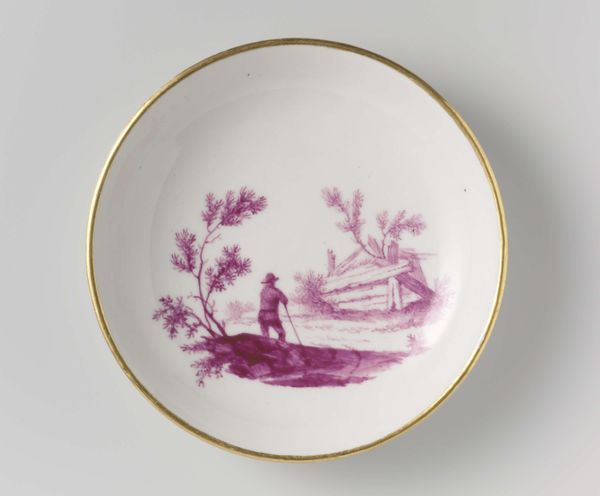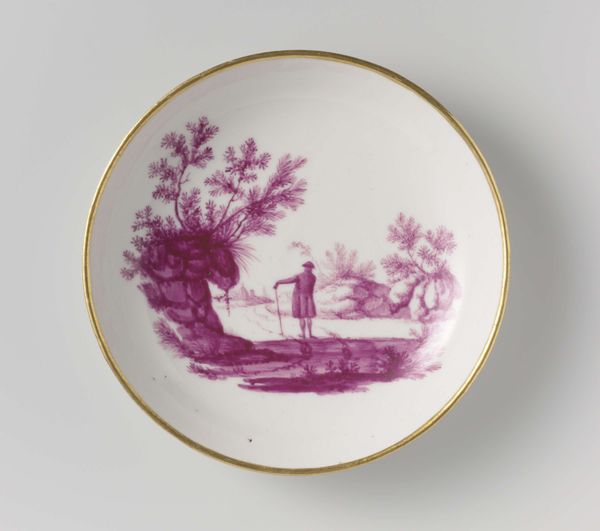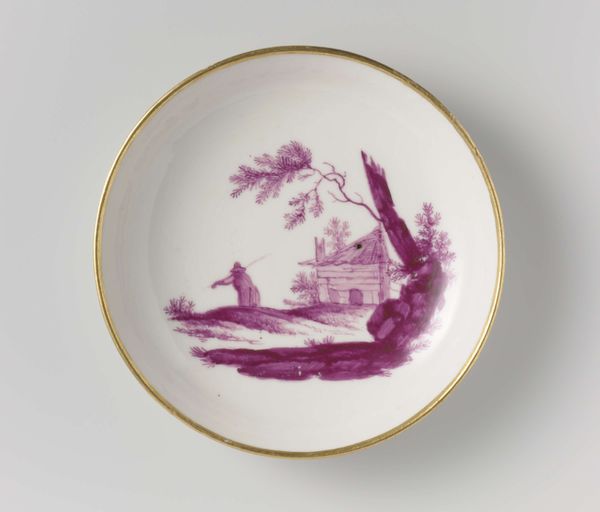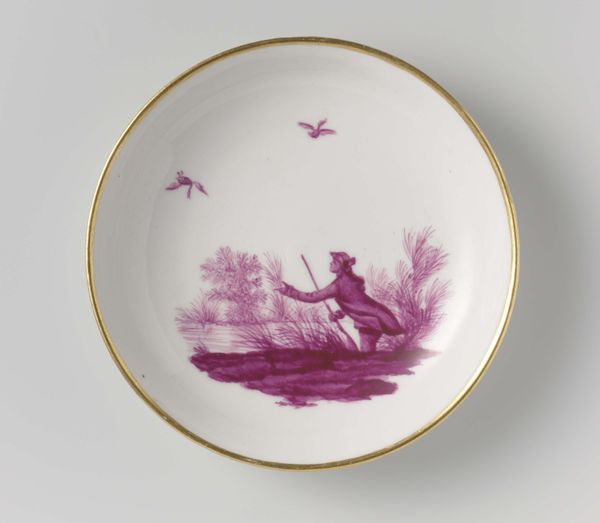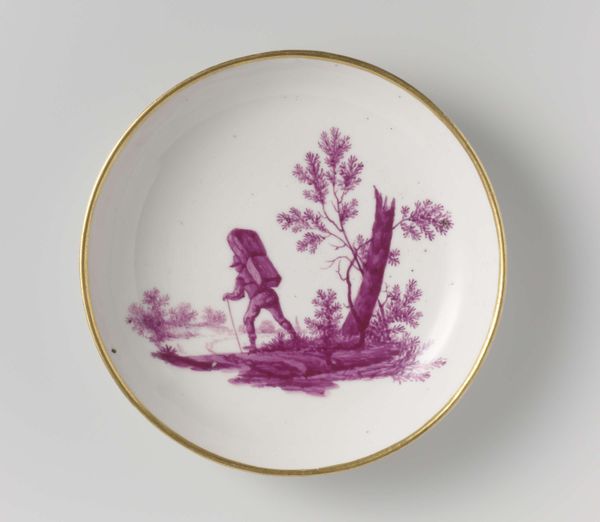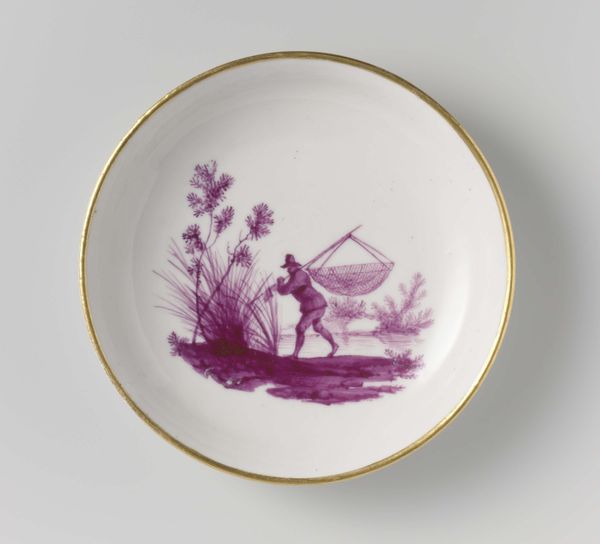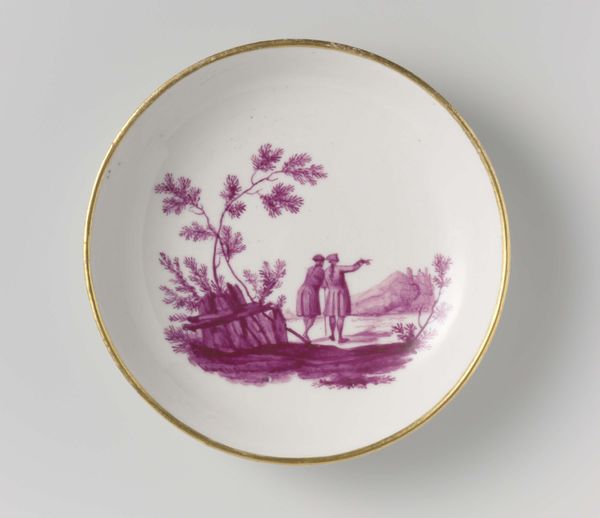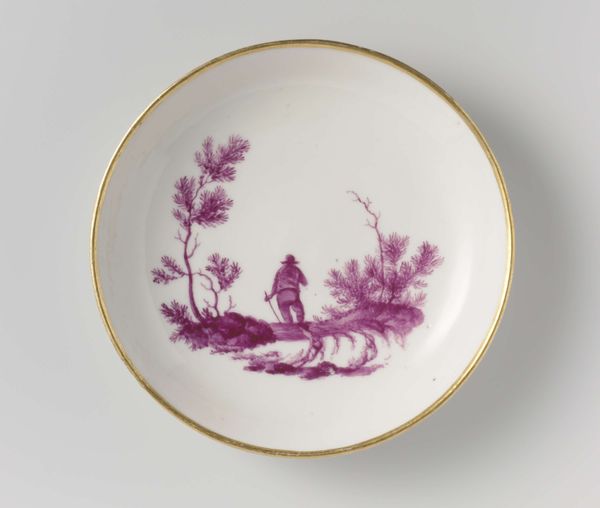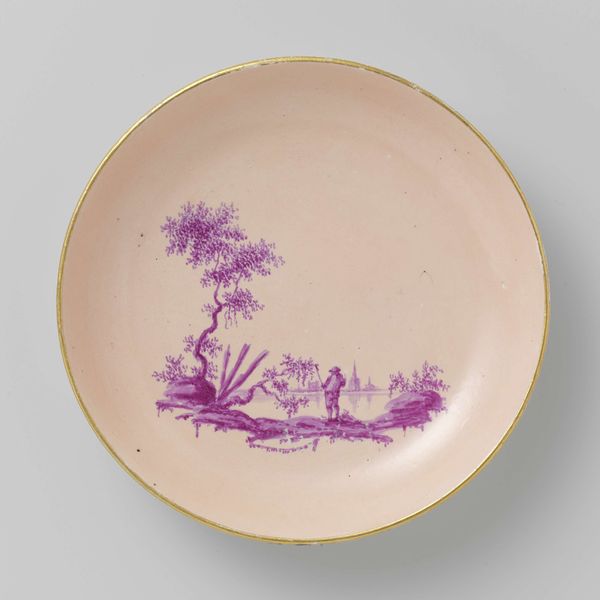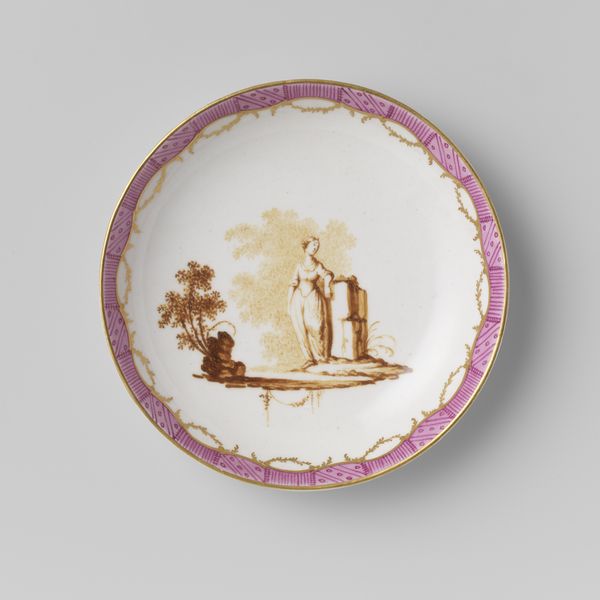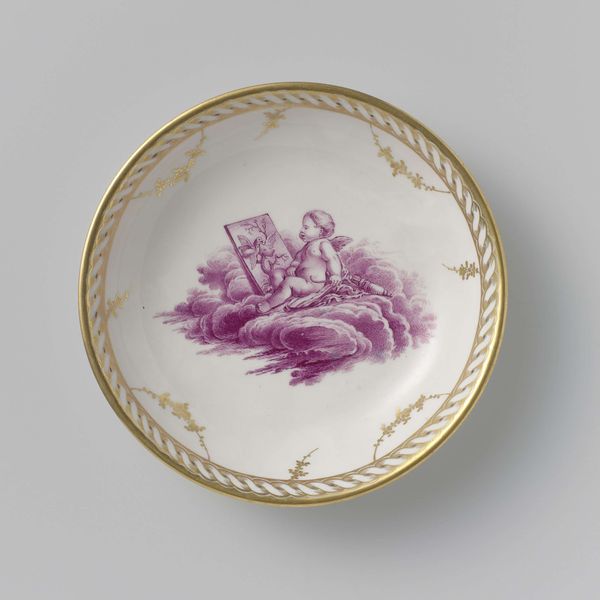
drawing, print, ceramic, porcelain
#
drawing
# print
#
landscape
#
ceramic
#
porcelain
#
figuration
#
stoneware
#
ceramic
#
genre-painting
Dimensions: height 2.2 cm, diameter 12.0 cm
Copyright: Rijks Museum: Open Domain
Curator: Welcome. We're looking at a porcelain plate titled "Schotel," crafted around 1775 by the Loosdrecht manufactory. The monochrome painting, rendered in a delicate purple, depicts a genre scene. Editor: Purple... It's quite unexpected, isn’t it? For a landscape on a plate, that violet wash lends such a dreamy quality. Almost melancholic, like twilight reflecting on water. It makes me want to reach out and stir the scene with a spoon. Curator: The choice of color certainly deviates from conventional landscape painting. Consider its formal impact. The restricted palette forces a concentrated engagement with line and form, drawing attention to the composition. The image field’s division relies on balance achieved through placement of natural objects. Editor: I see what you mean about line and form, it's like looking through a faded memory, but rendered with exquisite detail. Even though it’s on such a small scale, I can almost smell the damp earth and hear the distant church bells. Curator: The narrative unfolds on a flattened plane, with motifs that mirror and complement each other: rocky cliffs and gentle water flow and architectural details in the far distance. These oppositions establish notional balance with slight tension. Editor: Oppositions—yes! Like that lone figure fishing, both a part of the landscape, yet separate, isolated almost. What do you make of the use of such a genre scene for porcelain? I mean, were folks really pondering rustic life as they ate their pastries? Curator: Precisely, it marks an engagement with social currents and a shift towards sentimentalization of daily existence during that era. Porcelain became not just a luxury good but a canvas for reflecting prevailing cultural moods. Editor: It makes me consider how something utilitarian could embody such beauty. What do you believe is this work's legacy, decades on? Curator: Its legacy resides, I would argue, in how it marries craft with artistic vision. By embracing non-conventional styles and themes, the manufactory encouraged dialogues between aesthetics and lived experience. Editor: Ah, quite right. All that from one little violet fishing trip on a plate!
Comments
No comments
Be the first to comment and join the conversation on the ultimate creative platform.
